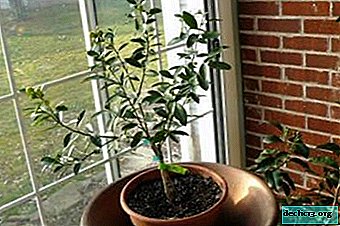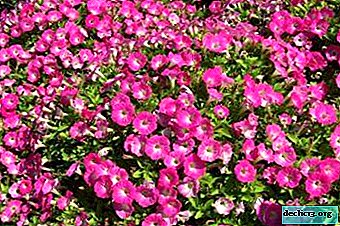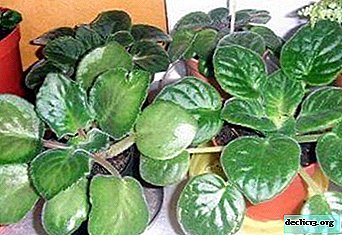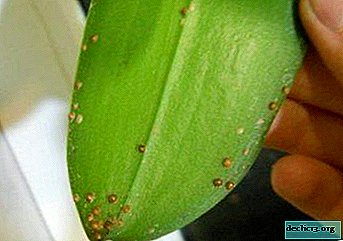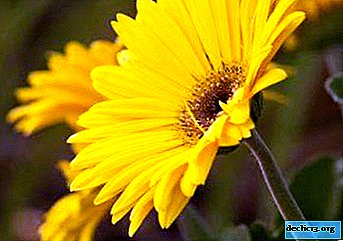The root man or Pallas Euphorbia - application in folk medicine, especially cultivation
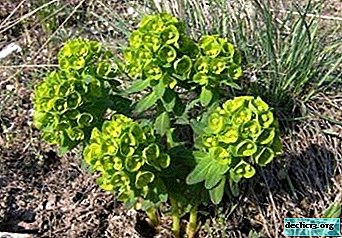
Let's play the association: Ledum - grows in a swamp, St. John's wort - dangerous for animals, but very healing for humans, coltsfoot - its leaves are completely different to the touch from above and below, agave - strengthens health, thereby prolonging life, euphorbia - the weed, which is very difficult to get rid of, the man-root - the rhizome of this plant helps men recover and maintain strength.
But what if we say that of all the above plants, the last two are the same plant? Are you surprised? Then get acquainted: the euphorbia of Pallas! In the article we will tell you where the "male root" grows, what healing properties it has and how to take it, and also show a photo.
Botanical Description
Attention: Pallas euphorbia is a short, perennial, herbaceous plant, reaching a height of 35-40 centimeters. It has a pubescent, rarely bare, simple stalk, leafy, with an upper internode 2-6 centimeters long.The lower leaves of Pallas are scaly and brown in color, the middle ones are sessile and have a brownish-green color, oblong, stiff, with a blunt apex, dense. Leaflets are collected in whorls of 2-6 pieces.
The plant has a branched and thick root, which can reach a length of up to 100 centimeters. The root of this variety of milkweed looks very similar to the root of ginseng and resembles a human figure in shape, however, the size of the Pallas root is significantly greater than that of ginseng.
This plant has many other names:
- Transbaikal ginseng;
- outcast;
- Euphorbia Komarov;
- Fisher Euphorbia;
- man grass;
- root man;
- damn milk;
- sun gaze.
Pallas euphorbia grows in Mongolia, Korea and China. In the Russian Federation, this plant is found in very small quantities only in the south and southeast of the Chita region on the banks of the Arguna, Onon and Shilka rivers. The euphorbia of Pallas growing here is listed in the herbal Red Book. Its favorite places of growth are flat steppes, as well as rocky and gravelly slopes.
Photo
In the photo below, you can see what the medicinal euphorbia of Pallas looks like.



Healing properties
The chemical composition of this plant has not been thoroughly studied.. However, a well-known fact is the presence of the following chemical elements in the rhizome of Pallas milkweed:
- Alkaloids.
- Anthracene derivatives (their traces).
- Vitamin C.
- Glycosides.
- Bitter and tannic extractive substances.
- Diterpenoids.
- Lactones.
- Resins (up to 8 percent).
- Toxins
- Triterpenoids (euphorbin, euphorbol, euphol).
- Flavonoids.
Also in the root of this plant are present:
- fatty acids - stearic, palmitic, linoleic;
- essential oils;
- myricin and sucrose;
- euporbic acid anhydride;
- euphuron;
- taracasterol;
- tirucallol.
What cures this plant?
 The root extract of this plant species is an excellent stimulator of healing processes, has antibacterial and immunostimulating qualities. Lactones contained in Pallas euphorbia have antibacterial and antitumor activity.
The root extract of this plant species is an excellent stimulator of healing processes, has antibacterial and immunostimulating qualities. Lactones contained in Pallas euphorbia have antibacterial and antitumor activity.
Selenium and phytoandrogens slow down the breakdown of testosterone, thereby enhancing sex drive and erection in men. Selenium, in combination with alkaloids, flavonoids and saponins, promotes the formation of antibodies, which makes this plant an excellent antiarrhythmic, analgesic, antispasmodic and cardiotonic drug that lowers blood pressure and strengthens capillaries. Also, when using preparations from Pallas milkweed, detoxic and laxative effects are observed.
Traditional medicine uses this type of milkweed to treat the following diseases:
- Inflammatory processes of the rectum, oral cavity, nasopharynx.
- Respiratory system disorders (tuberculosis, chronic bronchitis).
- Anemia and a violation of the chemical composition of the blood after radiation and chemotherapy.
- Constipation and congestion in the stomach (has an emetic effect).
- Urolithiasis disease.
- Prostate adenoma, impotence, chronic prostatitis (alcohol tincture from this plant is used for treatment).
- Excess weight.
- Cancer (leukemia, lymphosarcoma, external cancer, incurable rotting cancer ulcers, sarcoma, cancer of the duodenum, as well as the rectum, stomach, liver and kidneys).
For external use rubbing from concentrated decoctions of Pallas milkweed successfully treat neurodermatitis and skin tuberculosis. Juice - warts, powder from the root of the plant (powder) - abscesses, purulent wounds, phlegmon, boils, ulcers.
Watch the video about the healing properties of Pallas Euphorbia:
Application
Can grass be used?
 The herbaceous part of the plant is not used for medicinal purposes, since it is in it that almost all milky juice is concentrated, which is very, very toxic. It is not for nothing that even collecting rhizomes of milkweed Pallas is strongly recommended to be carried out only after the complete withering of its grassy part, and then, in completely closed clothes, tight gloves and with glasses on. The use of a gauze dressing on a person or respirator is also encouraged.
The herbaceous part of the plant is not used for medicinal purposes, since it is in it that almost all milky juice is concentrated, which is very, very toxic. It is not for nothing that even collecting rhizomes of milkweed Pallas is strongly recommended to be carried out only after the complete withering of its grassy part, and then, in completely closed clothes, tight gloves and with glasses on. The use of a gauze dressing on a person or respirator is also encouraged.
Such precautions are necessary, because the milky juice of a plant that gets on the skin or mucous membrane causes severe burns, and if untreated it enters the human body, it can cause serious poisoning.
For medicinal purposes, only the rhizome of the plant is used.. It should be collected only at the very beginning of autumn, when the whole bush is already completely wilted.
How to cook and drink tincture?
Water tincture from milkweed root of this type is recommended in the treatment of the male reproductive system. It cures prostatitis and helps increase potency. For women, such a tincture will be useful for infertility, cysts, fibroids, fibroids and mastitis. Take this water tincture four times a day for a tablespoon.
The tincture is prepared as follows:
- 5 grams of dried root must be ground.
- Pour the crushed root with 0.5 liters of boiling water.
- Insist with the lid closed for half an hour.
- To filter out.
Alcohol tincture is used in the treatment of pulmonary diseases, as well as inflammatory processes of the genitourinary system. This tool is prepared as follows:
- 10 grams of slightly chopped root pour 0.5 liters of vodka or medical alcohol.
- Close the container tightly and leave it in a dark place for 2 weeks.
- Shake the tincture periodically without opening the container.
- After two weeks, the finished alcohol tincture should be filtered.
Take this remedy as follows: one drop of tincture in a glass of water once a day. Every day, the dosage should be increased by one drop, bringing it to 30 drops per glass of water. After which, take the drug for another month, but already reducing the dosage by one drop daily.
How to take rhizomes?
Most often, Pallas milkweed root is used in powder form.: in the form of powder or in combination with honey in the form of home-made pills.
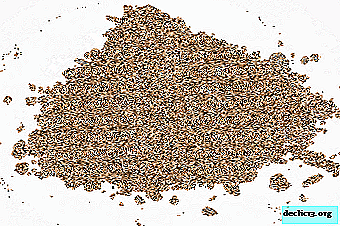 Powder powder from Pallas root is a very effective tool in the treatment of abscesses, purulent wounds, burns and furunculosis. Such a powder is prepared by simply grinding dry rhizomes in a coffee grinder.
Powder powder from Pallas root is a very effective tool in the treatment of abscesses, purulent wounds, burns and furunculosis. Such a powder is prepared by simply grinding dry rhizomes in a coffee grinder.- Pallas root pills with honey are an effective way to increase immunity and strengthen the cardiovascular system. The latter also contributes to the stabilization of pressure.
Pills are prepared by mixing 100 grams of powdered rhizome of Pallas milkweed and 50 grams of not too liquid honey. 5 mm balls are formed from this mixture, spread on a clean paper or a baking sheet and put in a cool place for solidification.
Contraindications
Even the most healing plant can turn into a real poison if used improperly. The same can be attributed to the Pallas milkweed. Before you begin the treatment process with this plant yourself, be sure to consult a doctor.
Pallas Euphorbia is strictly contraindicated in the case of:
- pregnancy
- individual intolerance and sensitivity to the components contained in this plant;
- lactation (breastfeeding);
- tachycardia;
- excessive excitability.
How to prepare raw materials?
As already mentioned a little above, only the rhizome of the plant is used as a medicinal raw material. It can be prepared for further use as follows:
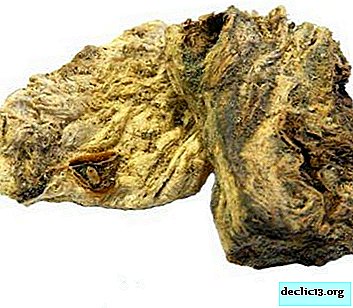 The collected plant rhizomes must be freed from excess soil and dirt and washed in cool water.
The collected plant rhizomes must be freed from excess soil and dirt and washed in cool water.- Spread washed rhizomes on a flat surface and expose to the sun to dry.
- After the rhizomes have dried and a brown crust forms on them, this crust needs to be carefully peeled off and the roots left to dry for about another week, but not in the sun, but in a shady, well-ventilated place.
- After the final drying, the roots can be folded into a fabric bag (it is better if it is a natural burlap).
How to grow?
Despite the fact that Pallas's euphorbia is an endemic from China, Korea, Mongolia and the Altai Territory and Transbaikalia of the Russian Federation, many flower growers and gardeners still manage to grow it on their own balconies, window sills and plots.
In fact, this type of plant is unpretentious in growing and it needs the following conditions for successful growth:
- The soil must be selected sand-peat with an admixture of turf and deciduous soil, as well as with a certain amount of stones, since it is in such soil that the plant grows in nature.
- For the cultivation of Pallas, deep and not too wide pots-pots are used.
- Euphorbia Pallas does not particularly like the sun, so growing it in direct sun is not worth it. Although it is permissible to plant a plant in the open ground in summer, it is still better to do it in a shady and not too hot place. The optimum temperature for growing this plant is + 17 ... +20 degrees.
- Watering the plant in each season of the year is necessary in different ways: in spring and autumn - once every 14 days, in summer - once a week, in winter they are limited to watering once a month or every 21 days.
- In order for the plant to grow actively, it needs top dressing. This may be a specialized fertilizer for cacti. In winter, fertilizing it is not required. The rest of the time, it will be enough to perform top dressing once in 2 weeks.
Breeding
At home, the plant propagates exclusively by leaf or stem cuttings. Cutting is carried out as follows:
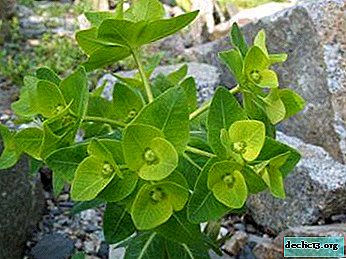 A small, 5-7 centimeter long piece of leaf or stem is plucked from the top of the plant.
A small, 5-7 centimeter long piece of leaf or stem is plucked from the top of the plant.It is necessary to pinch off part of the plant, but in no case to cut it off. A cut stalk will never take root.
- Set aside the stalk and wait until the milky juice drains, and the damaged area is tightened with a protective film.
- After this, the cuttings are planted in a sand-peat mixture.
Rooting cuttings occurs after 13-15 days. Seed propagation of this type of milkweed in the home is considered impossible.
Disease
Euphorbia is affected by mealybug, scabies and spider mites.. If euphorbia feels a lack of phosphorus in the soil, it will begin to take off the foliage, and with excessive watering, the rot of the plant stem may begin. A perceptible lack of light greatly inhibits the growth of euphorbia.
In whatever form and whatever diseases Pallas euphorbia is used, it has a therapeutic effect very quickly and noticeably. However, we again strongly recommend that before starting the treatment process with this rather poisonous plant, thoroughly consult with your doctor and carry out all actions under his control.

 Powder powder from Pallas root is a very effective tool in the treatment of abscesses, purulent wounds, burns and furunculosis. Such a powder is prepared by simply grinding dry rhizomes in a coffee grinder.
Powder powder from Pallas root is a very effective tool in the treatment of abscesses, purulent wounds, burns and furunculosis. Such a powder is prepared by simply grinding dry rhizomes in a coffee grinder. The collected plant rhizomes must be freed from excess soil and dirt and washed in cool water.
The collected plant rhizomes must be freed from excess soil and dirt and washed in cool water. A small, 5-7 centimeter long piece of leaf or stem is plucked from the top of the plant.
A small, 5-7 centimeter long piece of leaf or stem is plucked from the top of the plant.